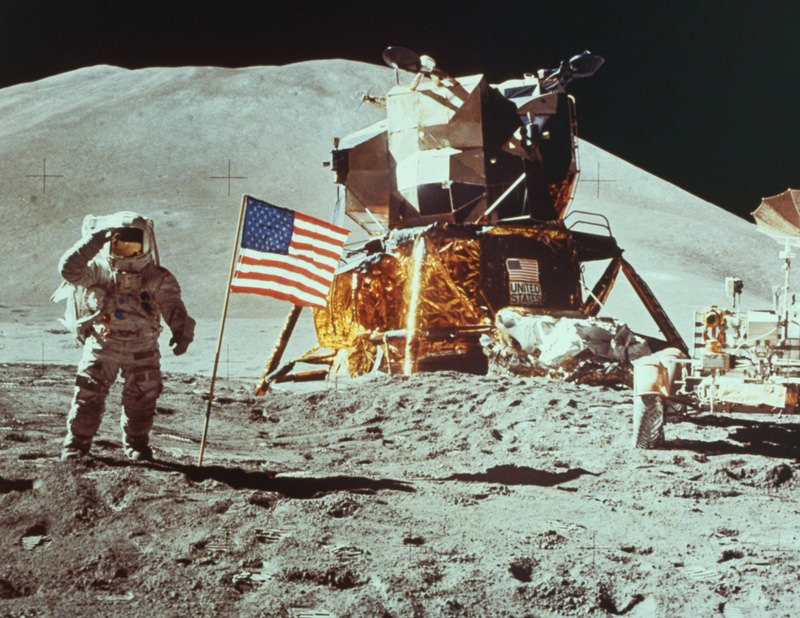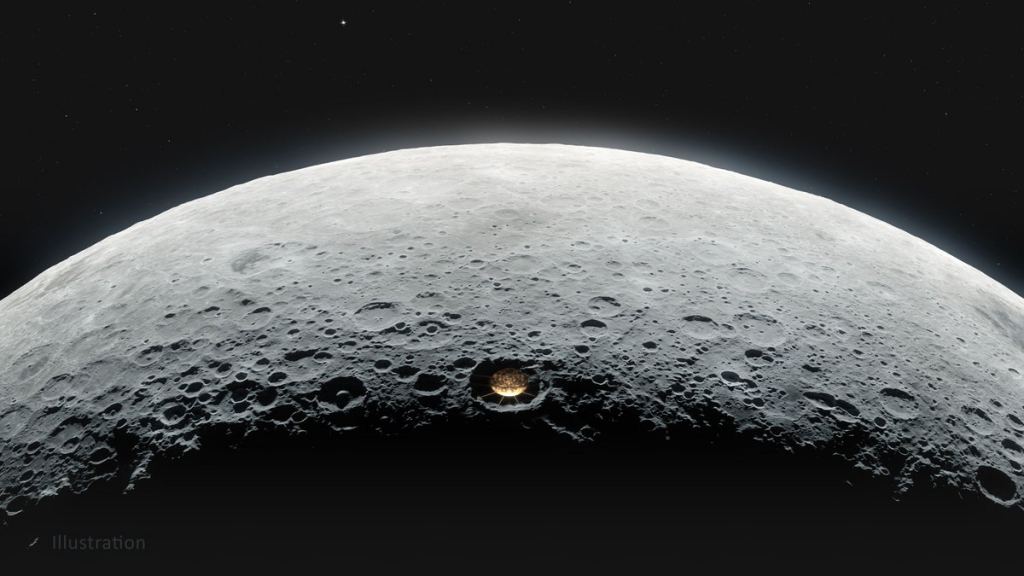Move Over Artemis Accords! Behold the Lunar Governance Report and EAGLE Manifesto!
By Matt Williams
In July 1999, the Space Generation Advisory Council (SGAC) was created with the purpose of representing the “Space Generation” to the UN Office of Outer Space Affairs (UNOOSA). For this non-governmental organization and professional network, this would consist of bringing the “views of students and young space professionals to the United Nations (UN), space industry and other organizations”.
Given the importance of the Moon for all of our future space exploration goals, SGAC created an interdisciplinary group in June of 2020 that is focused on lunar policy. Known as the Effective and Adaptive Governance for a Lunar Ecosystem (E.A.G.L.E.), this group of 14 young space professionals is dedicated to ensuring that the younger generation has a voice when it comes to the development of regulations for lunar policy.
On May 12th, 2021, the SGAC released the report prepared by the EAGLE group, which outlines their ideas and proposals for how we can ensure that the regulations governing lunar activities are inclusive, effective, and adaptative. It’s known as the Lunar Governance Report, a document that will be presented during the 2021 meetings of the UN Committee on the Peaceful Uses of Outer Space (COPUOS).

In addition to the Report, the SGAC also released an Executive Summary and The EAGLE Manifesto. Whereas the former is a synopsis of the Report and its recommendations, the latter is essentially a condensed version, as well as a statement of purpose and a call to action. As its states:
“Within the next decade, the first commercial missions will touchdown on lunar regolith, and more nations than ever are engaging in this new era of lunar exploration. Without clear guidance from the international community, however, these actors are likely to interfere and even get in conflict with each other, threatening the realization of a prosperous future on the Moon.”
“For All Humankind”
The Report is the result of the work EAGLE has been performing in the past year, which included interviewing prominent members of the space community and studying various policy proposals. From this, EAGLE concluded that a new international instrument was required that is consistent with the principles set down by the Outer Space Treaty, which was originally signed in 1967 at the height of the “Space Race” and is currently recognized by 111 nations.
This Treaty effectively laid out the rules for space exploration, forbade signatories from asserting national sovereignty over regions of space, any and all celestial bodies, and outlawed the testing of nuclear weapons in orbit. But most of all, it asserted that the exploration and use of space were to be the “province of all mankind.” Article I of the Treaty spells it out:
“The exploration and use of outer space, including the moon and other celestial bodies, shall be carried out for the benefit and in the interests of all countries, irrespective of their degree of economic or scientific development, and shall be the province of all mankind.
“Outer space, including the moon and other celestial bodies, shall be free for exploration and use by all States without discrimination of any kind, on a basis of equality and in accordance with international law, and there shall be free access to all areas of celestial bodies.”

These sentiments were echoed by the commemorative plaque that was brought to the Moon as part of the Apollo 11 mission. This plaque, which was mounted to the leg of the Eagle Lunar Lander that brought Neil Armstrong and Buzz Aldrin to the lunar surface, reads: “Here men from the planet Earth first set foot upon the moon. July 1969 A.D. We came in peace for all mankind.”
Maintaining this spirit of internationalism, cooperation, and the use of the Moon for peaceful purposes – the benefits of which are to be shared globally – is essential to ensuring that the Moon doesn’t become an environment where the mistakes of the past are repeated. In short, we would like to avoid another period of colonization and ruthless exploitation perpetrated by various governments and commercial entities.
Going Back to Stay
Starting in the early 2000s, the focus of human space exploration shifted beyond Low Earth Orbit for the first time since 1972. In the coming years, NASA intends to send the first astronauts since the Apollo Era to the lunar surface with the Artemis Program, and also to create a “sustained program of lunar exploration.” Partnerships with other space agencies and commercial partners are a key part of their plan, all of which are laid out in the Artemis Accords.
However, there are many who are critical of the Accords because of how they interpret the Outer Space Treaty and the conditions that are attached. While the Accords emphasizes the need for cooperation, transparency, and consultation between signatories, it is also tied to a specific national program, leading some to feel that it is too political in nature. As is stated in the Accords, signatories are committing to implementing (among other things):
“[T]he provisions of the Outer Space Treaty and other relevant international instruments and thereby establish a political understanding regarding mutually beneficial practices for the future exploration and use of outer space, with a focus on activities conducted in support of the Artemis Program.”
In legal terms, this means that those wishing to participate in the Artemis Program must first agree to these principles, and all those who sign are committing to furthering the interests of a NASA program above all else. To date, the Accords have been signed by nine countries and their respective space agencies. These include the US, UK, Canada, Australia, Japan, Luxembourg, Italy, the United Arab Emirates, South Korea, and Ukraine, with Brazil also indicating its intent to sign. India, China, and other participants in the European Space Agency (ESA) have yet to sign.
Russia has refused, claiming that the Accords are too “US-centric” and a departure from the cooperative framework that existed with the International Space Station (ISS). During the International Astronautical Congress (IAC) in October of 2020, Roscosmos director-general Dmitry Rogozin stated: “The most important thing here would be to base this program on the principles of international cooperation that we’ve all used. If we could get back to considering making these principles as the foundation of the program, then Roscosmos could also consider its participation.”
Basically, the Accords critics and detractors feel that while the Accords acknowledge the Outer Space Treaty and the spirit of cooperation, they feel it is watered down by political considerations. For these parties, a more inclusive and representative agreement is what is required to prevent the Moon from becoming a source of conflict between competing national interests. And it’s required soon!
In the coming decades, multiple space agencies plan to send astronauts to the Moon, establish bases around the South-Pole Aitken Basin, and harvest local resources to support their activities. Commercial space companies also have plans that range from commercial payload services to lunar tourism and private resource exploitation. These plans have been spurred on in recent years, thanks to the passage of two landmark pieces of legislation.
The first was the U.S. Commercial Space Launch Competitiveness Act of 2015, which was intended to “facilitate a pro-growth environment for the developing commercial space industry” by making it legal for American companies and citizens to own and sell space resources. This was followed by the signing of the executive order, “Encouraging International Support for the Recovery and Use of Space Resources,” in 2020, which established that the US does not view space as a “global commons” and gave the green light to lunar and asteroid mining.
In short, the lunar environment is projected to see a tremendous amount of activity in the coming decades, with several agencies and corporations looking to get their share. No agreed-upon international framework exists to mitigate all the potential disputes and conflicts that could result from this. On top of all that, there is research that indicates that the Moon’s resource base is simply not big enough to accommodate everyone.

Mclee Kerolle, space law and policy analyst and officer with the Space Court Foundation (SCF), is also the Former Executive Director of SGAC and a member of the EAGLE team. In the past, Universe Today has had the pleasure of speaking to him regarding the launch of the SCF and of their Woman of Color in Space series. As Kerolle told Universe Today via Zoom, the coming age of lunar exploration requires a more wide-ranging effort on behalf of all interested parties:
“For what’s it worth, besides being a political leveraging tool, the Artemis Accords are pretty good in terms of keeping the peaceful uses of outer space a thing [and] reinforcing the Outer Space Treaty. [But] it doesn’t seem as inclusive and you would think it would be and tying it to a space program means, off the bat, it’s conditional.
“So we need it to be based on space being for the benefit of all humankind. It doesn’t have to be something that’s [based] on certain conditions. [The Artemis Accords] are trying to be [inclusive] because it is going with that sentiment. But maybe it would need to be something more obvious, outwardly inclusive. It can’t just be implied.”
It’s therefore understandable why many view the coming age of lunar exploration and commercialization with both excitement and trepidation. As stated in the Lunar Manifesto “[w]hat will come of this new era of lunar exploration, in terms of scientific and commercial returns, remains to be seen.”
The “Space Generation”
Because of these concerns, 14 young space professionals from 10 countries came together in June of 2020 under the banner of SGAC to develop a report that assessed existing lunar law and offered the ideas and proposals of young professionals that are currently part of the international space community. In particular, the Report emphasizes that lunar exploration is an inter-generational commitment, and what happens today will have long-term consequences.
As such, it is important that those who stand to inherit the proposed developments in space get involved so they can have a hand in shaping that future. As Kerolle explained, their efforts are aimed at creating the framework that will allow us to avoid certain worst-case scenarios:
“We want to avoid a Colonialism 2.0 from happening on the Moon. If you completely go against the purpose of COPUOS and the Outer Space Treaty, it would almost have a Wild West effect… money would rule and it would be full of inequalities. It wouldn’t be a nice place, it wouldn’t be a peaceful place. It will become a first-come, first-serve basis when it comes to the resources on the Moon, then that would eventually lead to a lot of conflict between states.”

As noted, the SGAC is a non-profit, non-government organization, with over 15,000 members from all over the world. Membership is free and open to anyone between the ages of 18 and 35, regardless of whether or not they are employed by a space agency or in the space industry. Antonino Salmeri, the EAGLE lead, is an Italian space lawyer who specializes in lunar governance and is currently pursuing a Ph.D. at the University of Luxembourg. As he explained to Universe Today (also via Zoom):
“The organization was established to provide the perspective, the inputs, of the young generation, first and foremost to the Committee on the Peaceful Uses of Outer Space (COPUOS). In time, the organization expanded, we count more than 15,000 members spread across 168 countries.
“We partner with everyone in the space community, we partner with institutions, we partner with government, space agencies, companies, and a number of other non-governmental organizations, in order to expand their reach of young generations interested in space activities as much as possible.”
This is what the Report’s authors mean when they refer to the “space generation.” In short, they are referring to people in their late teens to mid-thirties, the ones that are likely to witness the many feats in space exploration that will happen in the coming years. The structure of the SGAC consists of five pillars, which reflect the diversity of the organization. They include:
- Local Communities: SGAC is organized vertically in terms of national points of contact for every region so that every country is represented.
- Project Groups: SGAC is also divided horizontally into ten project groups, with areas of focus ranging from space exploration to online policy and cybersecurity.
- Partnerships: and Outreach: SGAC partners with other non-profits and organizations and hosts local and global events related to their work. These include the European Workshop, the American Workshop, and the annual Debate Congress at the IAC.
- Scholarships: Through its partnerships with benefactor organizations, SGAC is able to offer financial support to students who are interested in conducting space-related projects, but lack the necessary resources.
- Cooperation with the United Nations: SGAC is associated with COPUOS and provides updates on its annual activities, recommendations from certain working groups, and contributes to the development of space law and developmental space activities are at different levels.

As the culmination of a year’s worth of interviews, research, and an extensive review process, the Lunar Governance Report represents a historic accomplishment – in that it is the first time that the SGAC has developed the position of the organization as a whole. Said Salmeri:
“So the Eagle Report is not just the opinion of the Eagle Team. It’s the opinion of the Space Generation Advisory Council’s 15,000 members represented at the United Nations with one document shared by the entire organization. In fact, on the first page, you can read that the document has been approved and adopted by the SGAC. And again (to my knowledge) this has never happened, where the SGAC spoke with one voice on a specific policy topic .”
The Report
The process of drafting the Report involved four phases, each of which are outlined in the document. For Phase One: Interviews, the team spoke with twenty-nine representatives from different segments of the space community (space agencies, commercial space companies, scientific organizations, academia, etc.) “The idea was to get the full picture of what each of these groups wants to see in a lunar government system and what they think should be in there. What should be the mistakes not to make, and what should be the priorities to ensure?” said Salmeri.
“Through this conversation, we shaped the section of the report called ‘Global Priorities and Needs for Lunar Governance,'” he added. “That is a unique feature of the Report, because (to my knowledge) nobody has conducted such a comprehensive assessment of different groups in the space community and what they want to see within a certain regulatory framework.”
For Phase Two, the team reviewed existing space policy and agreements, including the Outer Space Treaty, the Moon Treaty, the Artemis Accords, the “Hague Building Blocks,” the Lunar Resources Policy, and others. Phase Three consisted of an Internal Review, where the team assessed the information they had obtained with their interviews and document research and consulted with each other to create a formal draft.
The resulting Report was then released and the team is now in the implementation phase, where their findings and recommendations will be presented to COPUOS. The Report is divided into four sections, starting with an Introduction that stresses the importance of lunar governance for the future of space activities, a thorough overview of the current lunar policy landscape (The Status Quo), and the recommendations by today’s young generation on how to proceed (The Way Forward).

The fourth and final section of the Report concludes with the statement regarding the aspirations of the EAGLE team:
“Mindful of the benefits of plurality, the E.A.G.L.E. Team would like for its voice to help synchronize all the others, turning the current cacophony into an harmonious choir. With this Report, the Team hopes to [reignite] the bright flame that has lit the best years of international space law, for the development of a lunar legal framework that can honor the exploration and use of the Moon as the province of all humankind. The E.A.G.L.E. Team calls the whole space community to action to seal a global, intergenerational, and multi stakeholder pact for the regulation of lunar activities under a shared narrative of peace, inclusiveness, prosperity and sustainability.”
Recommendations
To ensure that this spirit of cooperation and cohesion among all nations continues into the indefinite future, the EAGLE group concluded from their year-long analysis that a new international instrument is required. As they propose, this would take the form of a “Governance Charter as a middle-level framework that could operationalize the fundamental principles of international space law and enable the incremental development of new ones.”
All told, the EAGLE team present twelve recommendations, as summarized in the Manifesto. Basically, they state that the Charter should:
- Build upon the principles of the Outer Space Treaty (the Magna Carta of space law)
- Develop adaptive and inclusive governance to enable the prosperous, sustainable, and peaceful development of the Moon
- Promote inclusive Lunar activities through the benefit-sharing and capacity-building
- Enable interoperability by starting a global process for the open development of lunar standards
- Prioritize the protection of human life by mandating universal standards for life support systems
- Define a global mechanism for identifying and preserving lunar heritage sites
- Preserve freedom of scientific investigation and enable a lunar economy
- Preserve accessibility and sustainability through the flexible regulation of lunar resources
- Clarify the purpose and features of “safety zones” to prevent harmful interference, respect free access, and settle liability attribution
- Integrate registration and liability conventions to ensure a uniform legal framework and resolve respective shortcomings
- Enhance international coordination and share essential information to enable due regard and ad-hoc consultations
- Rely on international arbitration as a subsidiary means for the resolution of conflicts and disputes

They also emphasize that this Charter be international in nature, intergenerational in scope, and ensure that regulation is adopted incrementally as new lunar activities are carried out. They furthermore envisage this Charter as being a flexible instrument that can provide a solid foundation for the long-awaited return to the Moon, while also enabling the adaptive development of new instruments.
An Answer to Artemis?
Does this mean that Lunar Governance Report (and its accompanying Manifesto) are a reply to, or an alternate version of, the Artemis Accords? According to Salmeri, the answer is “yes and no”:
“No, because we’re not a state and we’re not taking any political position [whereas] the Artemis Accords are a political document. Also because we do not reply to the Artemis Accords in the sense that we do not take any position against or in favor of them. I personally think there is a lot of good content there, I think it’s a good document, but as an organization, we didn’t take any stance.
“And then yes, because we want to achieve the same goal as the Artemis Accords, and perhaps in that sense, we want to complement what they’re trying to do. We want to develop a sort of middle-level framework in between the Outer Space Treaty and the rules that we will end up developing in the future for lunar governance – at the national and international level… And, most importantly, to guide the peaceful operations on the Moon over the first 5 to 10 years of activities.”
The EAGLE Report will be presented by SGAC on the afternoon of June 3rd at the 2021 meeting of UNCOPUOS, beginning with the 60th Session of the Legal Subcommittee. The EAGLE Team is also sharing its work with the broader space community and is seeking cooperative opportunities with all interested parties. In the meantime, they have extended an invitation to join their group as an EAGLE Advocate, the purpose of which is explained on their website:
“We invite all individuals interested in supporting the ideas of the EAGLE Team to become EAGLE Advocates and join a vibrant, global movement in support of the peaceful and sustainable development of the Moon. The names of EAGLE advocates will be acknowledged in a public list annexed to the Report and will always accompany its official submissions, beginning with the one at United Nations in June 2021.”
Further Reading: SGAC -EAGLE Documents
The post Move Over Artemis Accords! Behold the Lunar Governance Report and EAGLE Manifesto! appeared first on Universe Today.

May 27, 2021 at 10:19PM
via Universe Today read more...

Post a Comment